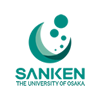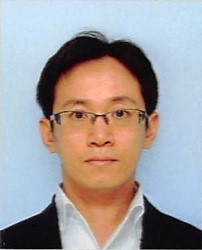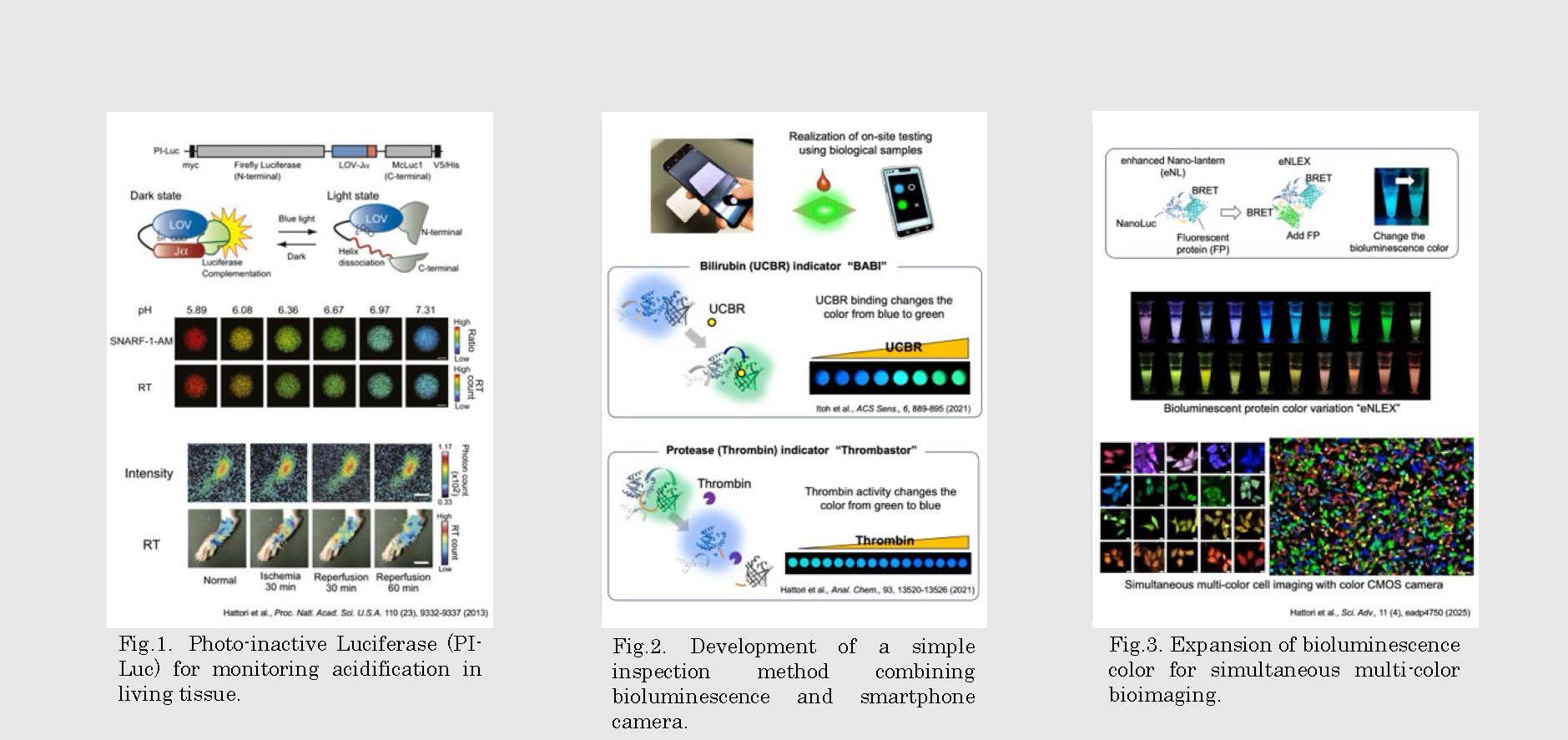
SANKEN
The University of Osaka
大阪大学
産業科学研究所

LAST UPDATE 2025/04/09
-
研究者氏名
Researcher Name服部満 Mitsuru HATTORI
准教授 Associate Professor -
所属
Affiliation大阪大学 産業科学研究所
生体分子機能科学研究分野
SANKEN, The University of Osaka
Department of Biomolecular Science and Engineering -
研究キーワード
Research Keywords生物発光
発光センサー
生体イメージング
Bioluminescence
Bioluminescent Indicator
Biological imaging
- 研究テーマ
Research Subject -
生物発光タンパク質を利用した分析システムの開発
Development of analysis system using bioluminescent protein
研究の背景 Background of the Research
生物発光タンパク質 (ルシフェラーゼ) を基盤とした検出技術は、生体内分子の定量解析および観察に広く用いられています。近年は非常に発光強度の高い生物学発光タンパク質が開発され、標的タンパク質の細胞内での局在や経時変化といった解析も実現しており、その可能性に強く関心が集まっています。
Bioluminescent protein (luciferase) -based technology is widely applied for quantitative analysis and observation of biomolecules. Recently, new bioluminescent proteins with high luminescence intensity have been developed to analyze the intercellular localization and temporal variations of proteins.
研究の目標 Research Objective
任意のタイミングでルシフェラーゼ発光のON/OFFや発光色を自在に変化させる技術を開発しています。この技術を応用するとともに観察技術の開発も進めることで、生体内外での様々な分子や現象を視覚化することを目指しています。
I have developed technology to turn bioluminescent proteins on and off and to change their luminescent colors at will. By applying this technology and developing observation techniques, I aim to visualize various molecules and phenomena inside and outside of the body.
研究図Figures

論文発表 / Publications
Hattori et al., Proc. Natl. Acad. Sci. U.S.A. 110(23), 9332-9337 (2013). Itoh et al., ACS Sens., 6, 889-895 (2021). Hattori et al., Anal. Chem., 93, 13520-13526 (2021). Hattori et al., Sci. Adv., 11(4), eadp4750 (2025).
研究者連絡先 / HP
- 8tr
 sanken.osaka-u.ac.jp
sanken.osaka-u.ac.jp - http://www.sanken.osaka-u.ac.jp/labs/bse/